- ATCS
- Smartport technology is growing with the development of Korea's IT.
SOFTWARE / SOLUTION / ATCS
We provide stable information technology services to our customersbased on our accumulated IT planning, IT construction and operation, and educational capabilities.
Having been a part of the air traffic control training simulator industry for many years, we have air traffic control experts and simulator program specialists in the Air Force, Army, Navy, and Civilian sectors to support the best training simulation and operating environment with the latest technology.
The air traffic control simulator is operated for the education and training of air traffic controllers and air traffic management professionals. The need for air traffic control simulators to support education and training is increasing due to the importance of improving and acquiring skills for air traffic controllers who are responsible for air traffic control.
- Required to train new controllers and high-skilled controllers
- In reality, controller training, which was only theoretical training, can be done in virtual machines similar to real-world environments.
- Need to train for anticipated contingencies
- Pre-training and mastery are required for all situations by setting conditions as needed.
- Emergency Assistance for Abnormal Aircraft
- Provide accurate course and altitude for aircraft facing critical situations and help them fly to their destination (aircraft system malfunction, engine failure, tidal impact, etc.).
- Minimize damage by responding quickly to accidents
- Ambulances and fire trucks are quickly dispatched to the accident site to ensure normal airport operation.
- Support for suppression in the event of aircraft hijacking and terrorism
- It helps counter-terrorism personnel and equipment move to the ground in the event of a terrorist attack, while also helping to guide aircraft dispatched to penetrate the air.
- Support for Air Traffic Control Training
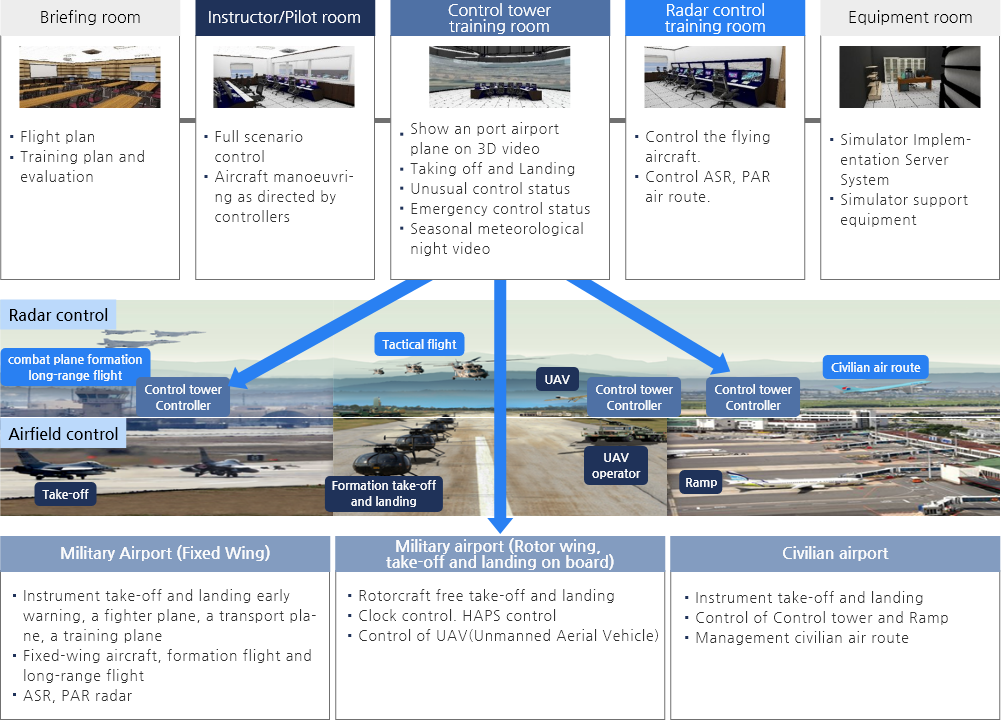
Smartport Technology has a 3D professional workforce and is also directly providing 3D implementation work at domestic and international airfields to provide higher quality ATCS. It provides screens such as daytime, nighttime, and seasonal weather.
- Work airport: Incheon Airport, Gimpo Airport, Jeongseok Airfield, Uljin Airfield, Yeongam Airfield, Taean Airfield, etc
- Aeronautical Simulator Equipment Photo

- Examples of 3D aerodrome operations
- Daytime work
- Aerial photographs of the airport establish buildings, surrounding terrain, runways, taxiways, etc., which are essential elements of the airport, and 3D implementation is carried out through modeling and rendering, providing higher quality ATCS.
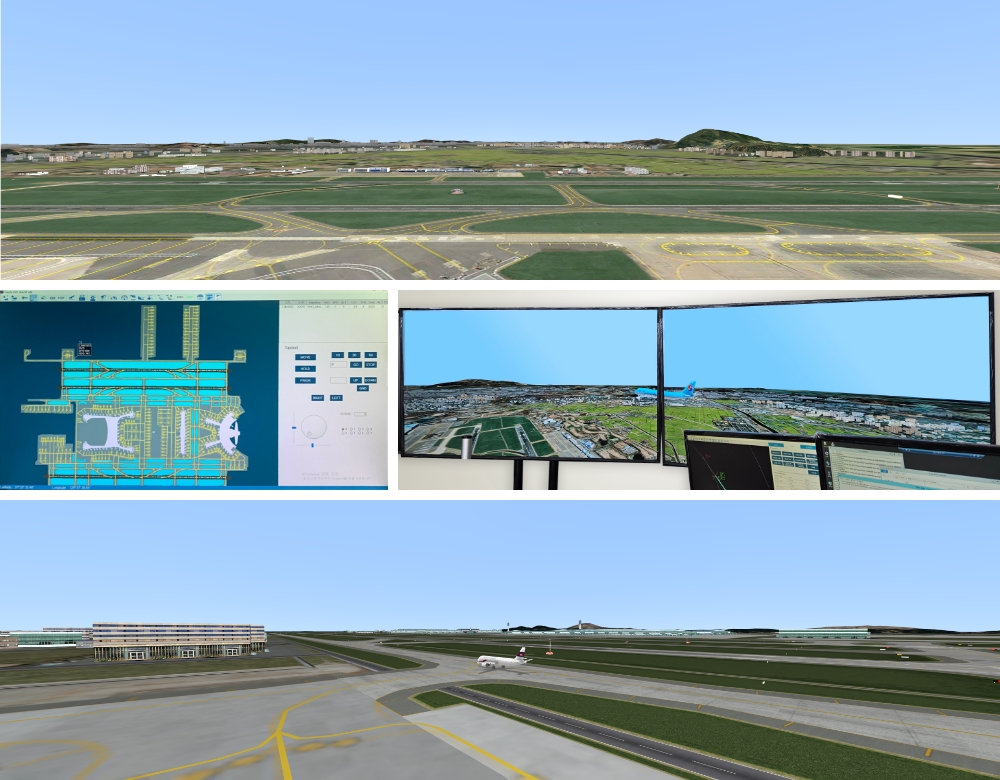
- Night work
- When driving at night at the airport, the building and surrounding terrain are changed, and the runway and guidance lights are worked in 3D real-life ways, helping to keep the plane running smoothly.
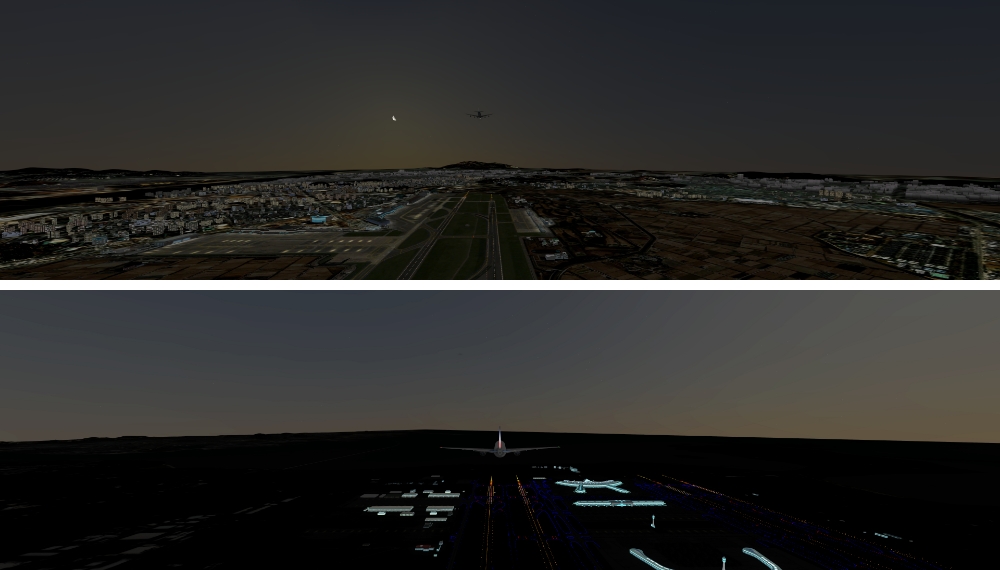
The Air Control Simulator Training Center aims to develop an optimal education and training system for clock flight and radar control training and to maintain the best performance to improve air control performance.
- The Air Control Simulator Training Center consists of an equipment room, instructor control room, control tower control practice room, radar control practice room, and briefing room.
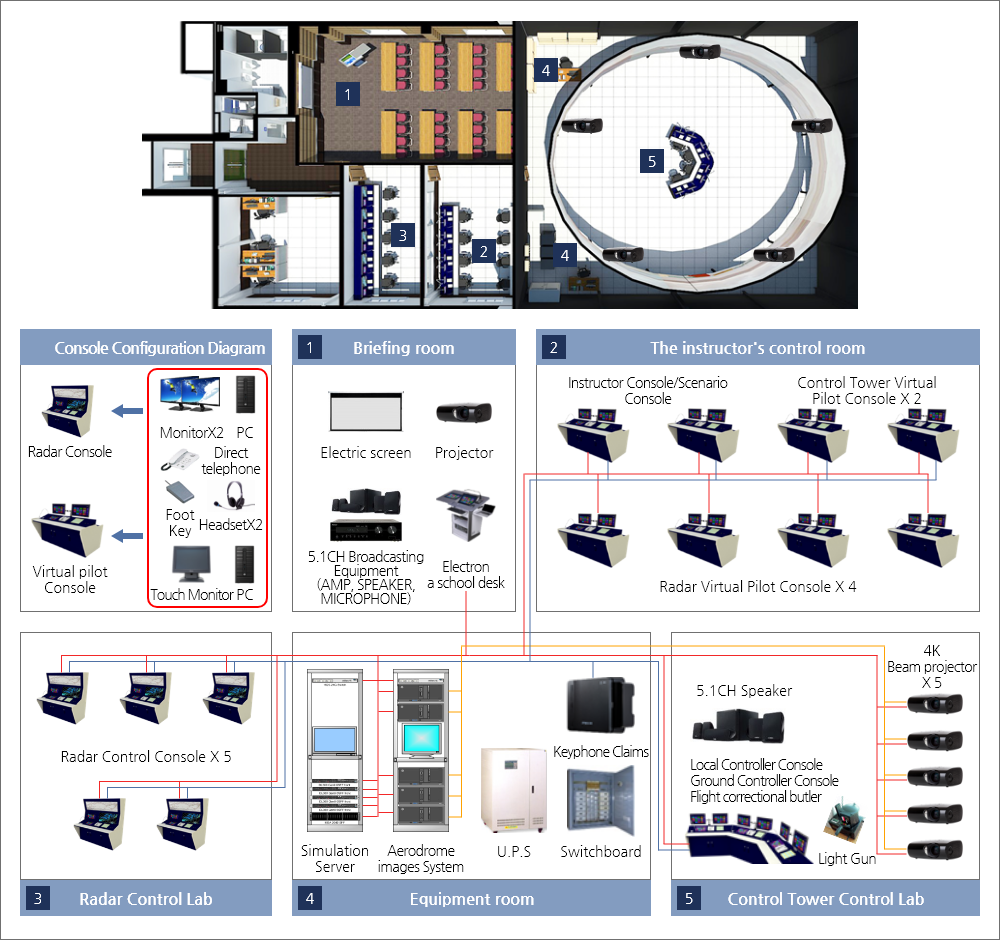
The Air Traffic Control Simulator applies International Convention(ICAO, FAA) standards and includes training functions including control of fixed wing, rotary wing and unmanned aerial vehicles. And to realize the maneuver characteristics of aircraft, we applied aircraft maneuver characteristics dynamics, large-capacity terrain processing and physical engine technology, and weather engine simulation technology.
- Air traffic control simulation program that realizes fixed wing, rotor wing, and unmanned aerial vehicle manoeuvring characteristics by applying International Convention (ICAO, FAA) standards
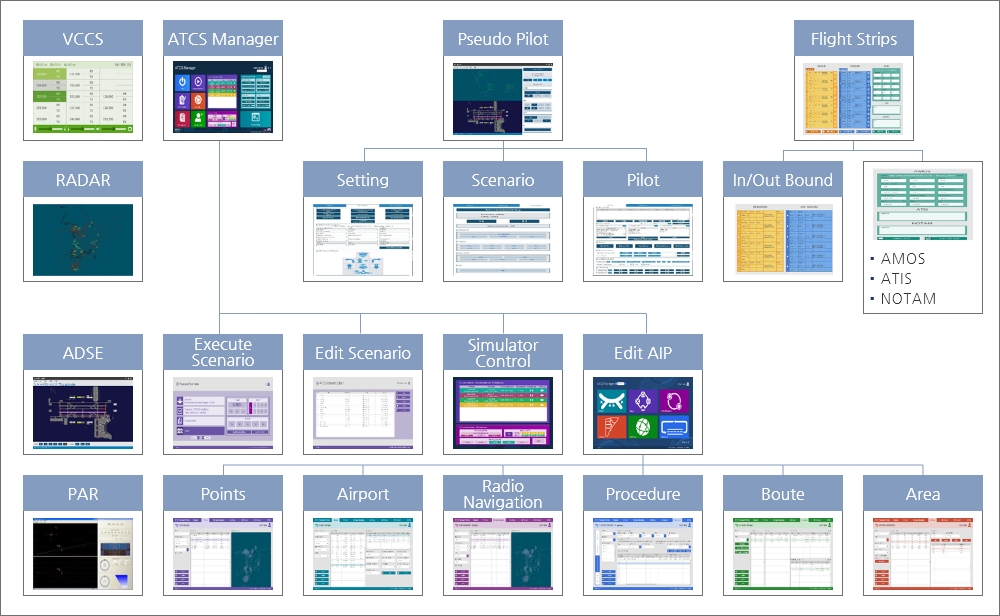
- Domestic operation status
| Sortation | Operating institution | Implementation Features |
|---|---|---|
| Air force | Air Force Headquarters, Air Force Education Command, Reserve Air Force Training center, Aviation Science High School | Airfield control, Radar control |
| Army | Aviation school | Airfield control, Radar control and helicopter clock control |
| Navy | 6th Fleet of the Navy | Airfield control, Radar control and ship displacement.Ship Control |
| Government branch | Ministry of Land, Infrastructure and Transport Seoul Regional Aviation Administration | Airfield Control |
| Public office | Incheon International Airport Corporation | Airfield Control |
| Korea Airports Corporation (Aeronautics Technology Training Institute) | Airfield control, Radar control | |
| University | Korea Aerospace University, Hanseo University, Kyungwoon University | Airfield control, Radar control |
In Korea, air traffic control simulators have been localized since 2007 and 11 systems have been established and operated by the military, government agencies, and universities.
- Training for controllers
- Virtual training systems for aircraft control that cannot be trained in real-world control towers can enhance training effectiveness.
- Emergency training
- Providing opportunities for training in response to dangerous emergency situations Air traffic safety can be secured by training regularly for dangerous situations.
- Interworking training support
- Increase the training effect on air traffic flow through interlocking scenario training for control tower control, access control, and route control.
- For International Standard Air Traffic Control System Training
- Advanced, diversified and flexible training of international standard air traffic control systems to enhance national air traffic operational competitiveness
- Job training for new controllers
- Pre-training prior to actual control seat control to relieve job burden
- Conduct systematic practical job training by subdividing the training objectives.
- Support for the stable performance of control tasks
- Maintaining the skills of a career controller
- Regular training and skill maintenance training
- Specialized training, new knowledge training, and training are carried out.
- Training to respond to abnormal situations
- Virtual training for airport ground emergency, control equipment emergency, notarized emergency situations
- Conducting training to respond to weather conditions
- Personalized training for each trainee
- It is possible to objectively evaluate individual skills and competency differences and to verify ability improvement.
- You can train to make up for your shortcomings by writing scenarios.
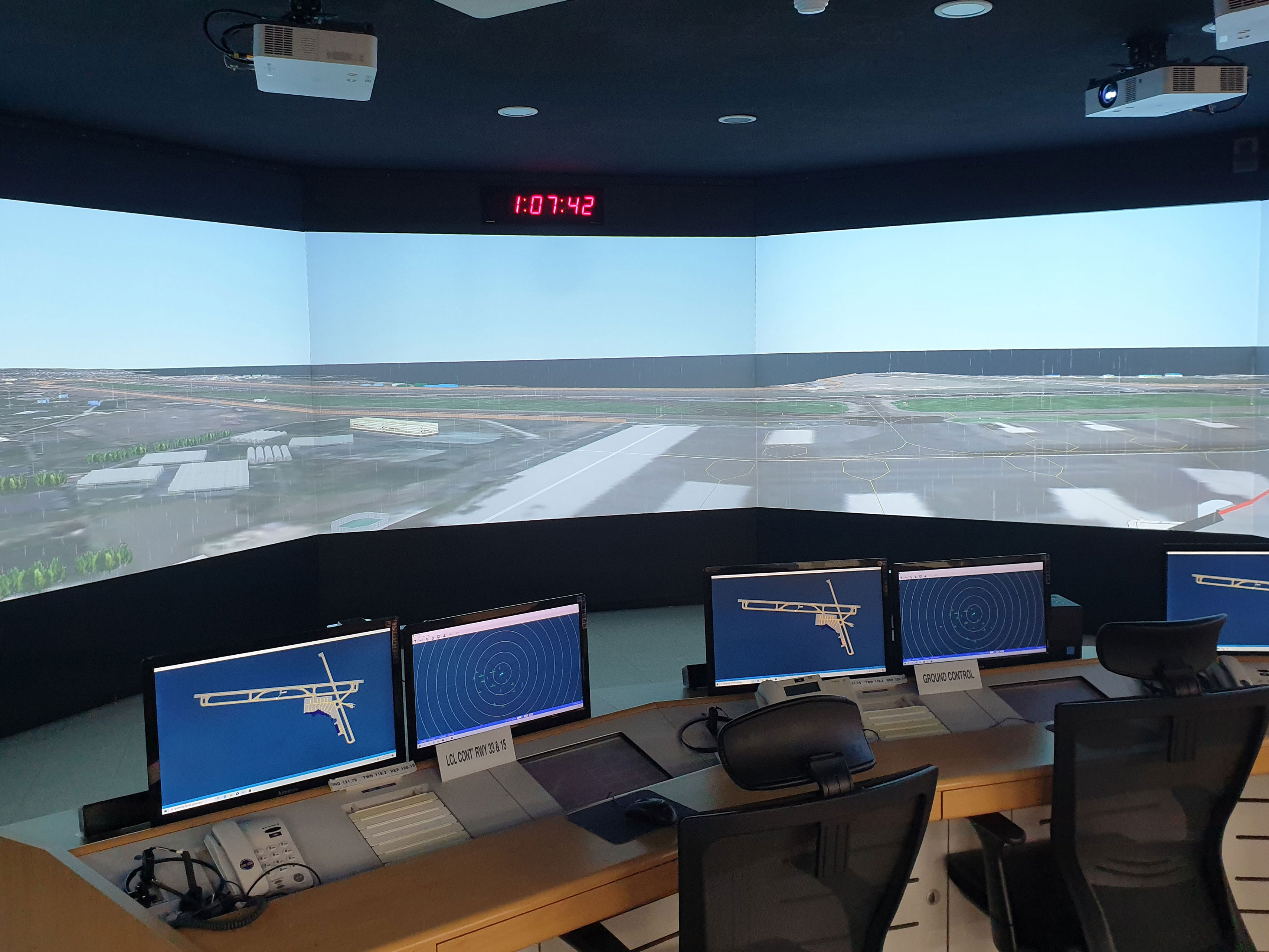
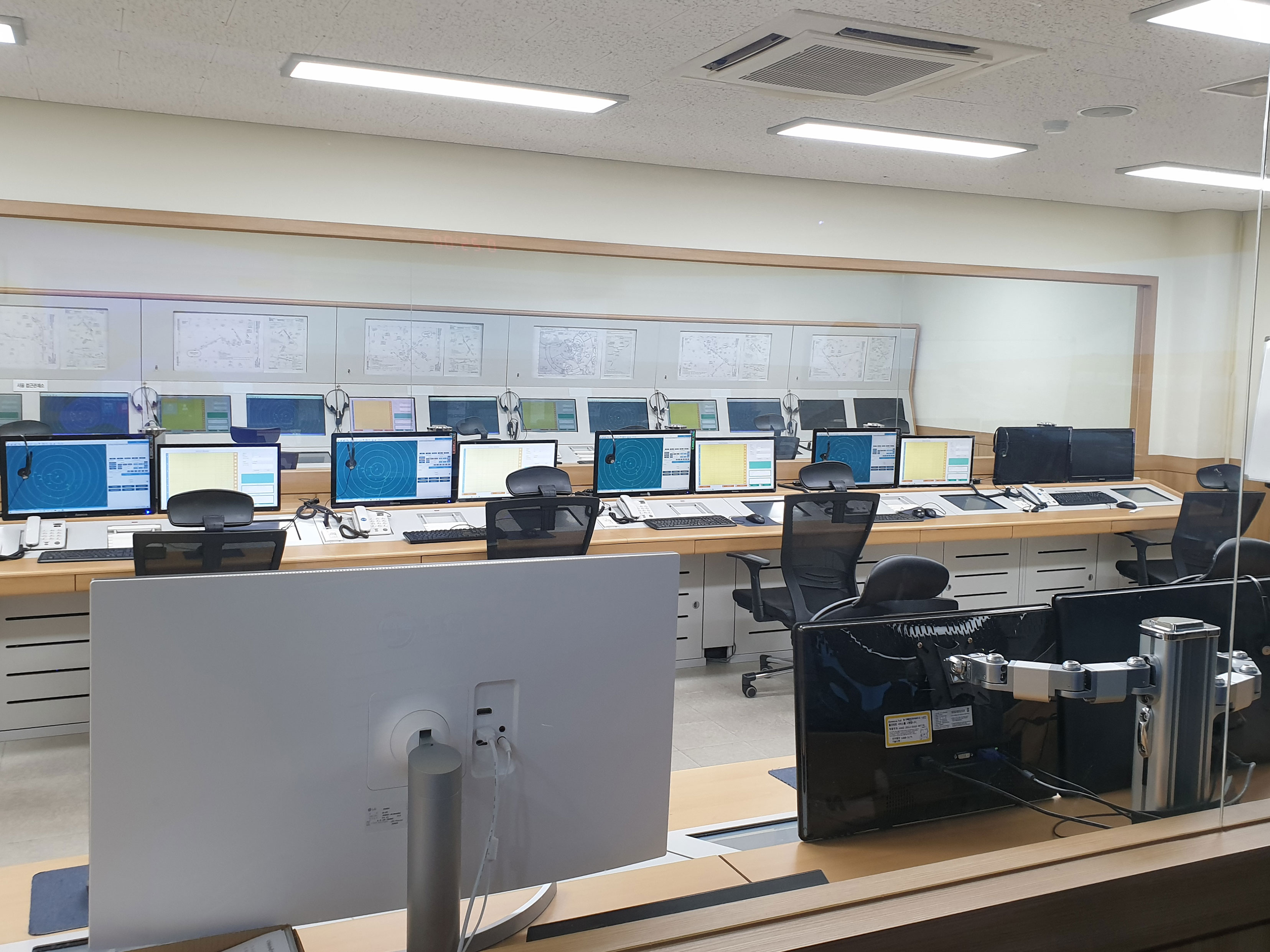
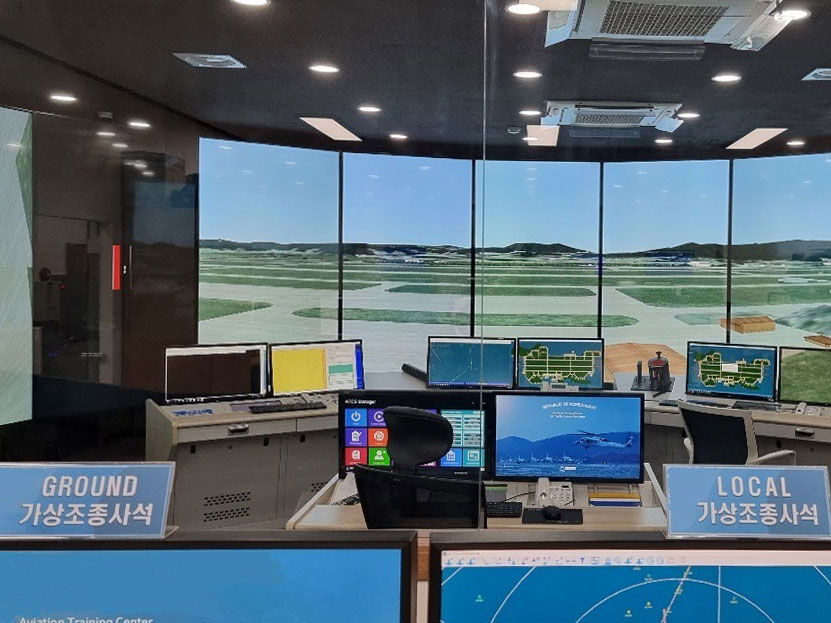
- Army Air Traffic Control Simulator Development (Air Traffic Control Simulator with Helicopter Operation)
- 4k Projector 5 Channel, 360 Degrees Cylinder
- Airfield control, Radar control
- Control tower room, Virtual pilot room, Radar room, Briefing room, Equipment room.
- Developed in the same way as the implementation cost used for control purposes
- Construction of educational environment for maximizing training effectiveness of training
- Cambodian Civil Aviation Authority Aviation Training Center
- KOICA Free Aid Company Project
- Business period 1 year
- 242.25㎡
- Channel 5 is 225 degrees
- Five airports
- Air Force Air Traffic Control Simulator Development (ROK Army)
- 5 channels 360 degrees
- 4K Projector Applied
- Rotary wing aircraft clock
- Rotary Wing Aircraft Squadron control
- Business year 2017~2019
- Development of Air Force Air Traffic Control Simulator (ROK Air Force)
- Business year 2011
- Cylinder 5 channel 225 degrees
- Beam projector
- Fixed-wing fighter clock and radar control
- Naval Air Traffic Control Simulator Development (Deck Landing and Take-off (on ship))
- Business year 2017
- Flat 13 Channel 240 Deg
- 98-inch large monitor
- Fixed-wing and rotary-wing aircraft clock and radar control
- Hanseo University Air Traffic Control Training Institute
- Business Period 2012 to 2017
- 332㎡
- 6 channels 255 degrees
- five airports
- Type 10 aircraft
- Airfield Control, Radar control
- Aviation University Air Traffic Control Training Institute
- Business year 2011
- 260㎡
- 5 channels 255 degree
- five airports
- Type 10 aircraft
- Airfield Control, Radar control
- Preparation of "A" grade designation criteria for simulation control unit designation